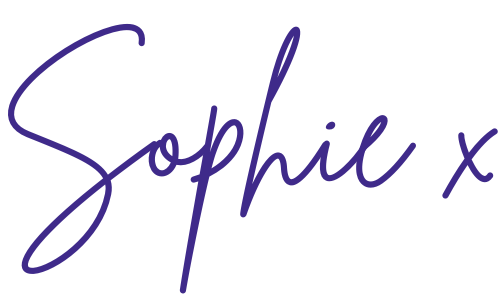3 SIMPLE BREATHING EXERCISES TO RELIEVE YOUR ANXIETY
- Sophie Shaw
- Oct 19, 2023
- 4 min read
Updated: Oct 23, 2023

What does anxiety feel like? A sick feeling in the pit of your stomach; heart beating too hard or too fast; brain fog and confusion; snapping at people even though you don't mean to; feeling judged - these are some of the most obvious signs that you're anxious or under stress. You might notice other things too - a clenched jaw, tension in your body, tight fists or sweaty palms, for example. Something you might not be consciously aware of, however, is your breath, and how it changes when you're stressed and anxious. Noticing your breath is helpful in two ways:
changes in the breath are an early warning sign that you're unsettled
controlling the breath is the key to slowing down and even stopping panic responses
When we're comfortable and relaxed, the breath flows easily - neither especially deep nor very shallow. When we're anxious, however, one of the first things affected is the breath - we usually hold it, often without realising. This is an ancestral throwback - a remnant of the 'fight, flight or freeze' response. Unconsciously, we're listening for prey, poising for battle or for running away. As anxiety takes hold, we might find ourselves breathing more rapidly, and taking more shallow breaths; we're drawing more oxygen into our bodies to ready the muscles for a fight. In our modern world it's unlikely that we're going to need to fight or run away from predators. But the brain and the body don't know any different - they keep pumping out adrenaline and cortisol and overworking the lungs and heart to get us ready, just in case. If it grows greater, this ancient unconscious response can make us feel out of control - and that triggers panic. The breath gets very shallow and it's a struggle to get enough air. Hyperventilating, the panic gets worse and worse. Breathing normally seems impossible. So how do we ease anxiety, before it takes hold? And how can we get back control, if we've tipped over into panic? Try these 3 simple breathing exercises to get control of your breathing, and relieve your anxiety. (Pro Tip: practice these exercises regularly when you're calm, so that you're not trying to learn something new when you're anxious or panicked.)
3 Simple Breathing Exercises to Relieve Anxiety:
Exercise One: Blow Away Stress - Easy This is a very simple exercise you can try when you're beginning to feel tense and stressed out. Use this when:
you're nervous about going out
the kids are beginning to do your head in
you're feeling overwhelmed at work
Steps:
Get comfortable sitting or lying down
Close your eyes
Imagine you're holding a bubble wand and a pot of bubble mixture
Imagine lifting the wand to your lips and gently blowing a soap bubble.
Imagine that you're blowing all of your stress and tension out into this bubble. Let it get bigger and bigger as you release all of your worries into it.
When it feels full, imagine letting it go free, drifting off into the sky and floating away out of sight.
Repeat until you feel calm again.
Exercise Two: Move Your Body, Use Your Breath - Easy/Medium Put that anxious energy to good use! Use this when:
you're obsessing over some unwanted thoughts or conversations
you're overwhelmed by anxiety
you start to feel that anxiety building into panic
Steps:
If you're standing sitting or standing still, start to move around
Move your body in an active way - get your favourite music on and dance about; do a few star jumps; run on the spot; have a chair disco!
Throw your arms away, swing them from side to side and over your head
Get your heart pumping from activity, rather than panic
Get a little out of breath from using your body, rather than your mind
When you feel more in control, ease off and let yourself rest
Notice how your breath can now settle easily back to normal
Exercise Three: Counting Breaths - Medium Learn to count your breaths to achieve a meditative state of mind. This exercise has two parts. Use this when:
you have some time to yourself
you want to start your day off on the right foot
you've had a stressful day and it's time to wind down or get ready to sleep
Steps: Part One
Get comfortable sitting or lying down
Begin by simply noticing the breath - where do you feel it in your body?
Start to count your breaths: in-breath 1, out-breath 2, in-breath 3, etc.
When you get to 10, begin again at 1
If your mind wanders, just begin again at the last number you left off
Part Two
Once your breathing has slowed and become easy, let the counting go.
Begin breathing in for a slow count of 1, 2, 3
Begin breathing out for a slow count of 1, 2, 3, 4, 5
Repeat
Keep this going for as long as you feel comfortable. Make the count slightly faster if you feel out of breath or uncomfortable. See if you can work up to 15 minutes - or longer! This may take several sessions.
When you can learn to control your breath, you'll learn to control your anxiety.
You can stave off panic attacks by using these simple exercises and getting really familiar with them while you're calm. Let me know how you get on! Big love,

P.S. Download my free quick calmer meditation HERE!
#anxiety #meditation #breathingexercises #mindfulness #hypnotherapy #reiki #guidedmeditation #stress #depression #panicattacks







Comments